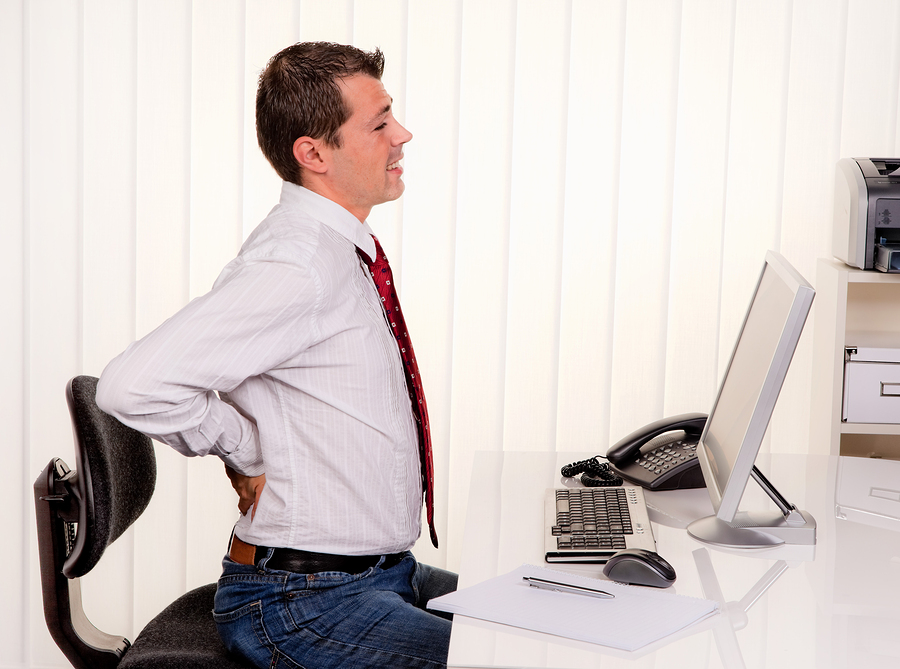- Make It Yourself Lavender Heart-Shaped Bath Bombs!
- 20 Things You Never Knew About “Down There”
- 12 Best Foods For Those Suffering From Arthritis Pain
- 12 Personal Hygiene Mistakes Almost Everyone Makes (Mom Never Told You About #4!)
- 15 Medicinal Plants And Herbs From The Cherokee People
- 12 Mind-Blowing Benefits Of Drinking Coconut Water During Pregnancy
- 12 Outstanding Winter Foods That Won’t Fatten You Up Like A Christmas Turkey
Why You Should Fix Your Posture, And How To Do It

Photo credit: bigstock.com
There has never been a period in history with so much wealth, prosperity and technological advancement, but it has come at a price. More and more people are leading sedentary lifestyles, characterized by long hours hunched over a keyboard, sitting down at desk or on the couch, or looking down at their smartphone. This has led to a global epidemic of poor posture, and all the health complications that can come with it.
Everyone knows bad posture when they see the slumped shoulders, stooped head, and overly curved back. The ironic thing is that people often fail to catch themselves exhibiting these same behaviors. It is important to keep in mind that bad posture doesn’t just affect these regions of the body, but the whole body as a unit.
“Think of posture as a set of blocks which are stable and sturdy when one block is stacked neatly on top of each other” said Jill Henderzahs-Mason, a physical therapist from the Mayo Clinic in Rochester, Minnesota. As long as the blocks are properly aligned, the tower remains structurally sound and intact. But if a block is pushed out of place, it causes instability and possible collapse.
This is what happens to our bones and muscles when we do not sit or stand properly. We may not collapse, but we’ll eventually experience pain and soreness that can limit mobility and hinder quality of life. Slouching forward can affect your breathing negatively. It compresses the ribcage, leaving the diaphragm and the lungs less room to expand and decreasing the amount of oxygen we take in with each breath.
Studies have even shown a correlation between posture and psychological and emotional health. People with good posture not only report feeling more confident and energetic, but are more likely to be perceived that way by others. Those with bad posture are more prone to depression. Some research has shown that simply adjusting your posture can help change your mood quickly. More and more research is demonstrating that physiology and psychology are more more closely intertwined than once thought.
Causes of Bad Posture
Common activities that cause bad posture are:
- Hunching over a keyboard
- Looking downward at a smartphone or tablet for long periods of time (also known as “Text Neck” or iPosture”
- Sitting with feet hanging all the time
- Sitting down for too long
- Cradling a phone against the shoulder with the head
All of these behaviors lead to slumped posture and pain in the back, knees, hips and shoulders.
Another factor that can contribute to this problem is your choice of footwear and the way you walk. Wearing shoes with no arch support can lead to pain in the knees. Women who wear high heels can sometimes experience pain in the feet and the back. Over time, poor choices in footwear can lead to muscle imbalances as well. Carrying heavy loads like duffel bags or backpacks can also affect posture, particularly if you are only wearing one strap and allowing it to hang to one side. This is very bad for your shoulders, back and hips.
Continue to Page 2
Fixing Bad Posture
One the simplest lifestyle changes you can make is to simply stop sitting so much. The human body is not naturally designed to sit still for hours and hours at a time. Every 20-30 minutes or so, just get up and walk around. The key is to simply move. If you can’t do this for some reason, at least try to change your position every 20 minutes or so.
To fix slouching and neck pain, let’s start with your computer. Place your monitor at eye level, so you’re looking ahead and not down. Try using a standing desk or adjustable desk. If neither of these is available, simply stack books under your monitor or laptop to bring it higher.
Titling your head at 60 degrees (the approximate angle at which most people view their phones) puts an astonishing 60 pounds of stress on your spine. The solution? Simply hold your phone a little higher, closer to eye level. If you use a tablet frequently, try using a stand that allows it to be propped up on a level surface like a table, so you’re not always looking downward at such a steep angle.
Exercises can also help. Don’t neglect your back at the gym. Many people have “rounded” shoulders that slump forward. Part of the reason for this is that their back muscles are not strong enough to hold their shoulders in place properly. Back exercises like rows and pullups can help a lot.
Barbell deadlifts can help strengthen the lower back and help you stand up straight, but they should be performed carefully. Seek assistance from a trainer if needed, as an improperly executed deadlift (or any other weighted lower back exercise) can lead to injury.
READ ALSO: Improve Bad Posture And Hunched Shoulders With These Simple Exercises Video
Posture is too important to neglect. Follow these instructions and stand up straight and walk toward a healthier and happier life.
References:

































